For a second straight week, Notre Dame played 30 minutes of dominant football only to see consistency waver and things start falling apart late. Drew Pyne put up his strongest statistical performance of the year, wisely relying on Michael Mayer to dominate the BYU defense. The Irish defense was phenomenal for the first half, then started getting gashed for big plays. Unfortunately, this happened at the same time the ND offense had a few hiccups, leading to unnecessary heartburn in the 4th quarter until Marcus Freeman’s team iced it with some late clutch drives.
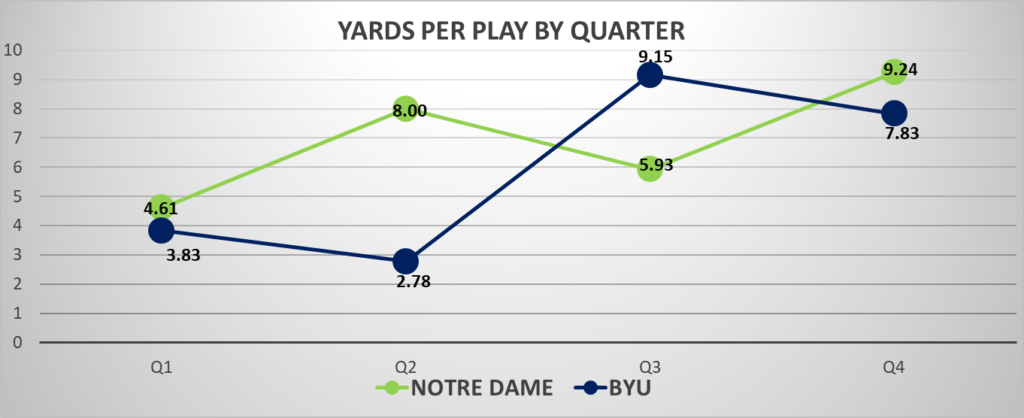
Let’s start with the positives – when Mayer scored his second touchdown of the night with 8 minutes remaining in the 3rd quarter, each team had completed six possessions. While the scoreboard showed a comfortable 25-6 Irish lead, the numbers saw a game that could have been even further out of hand:
- Success Rate: ND 52.9%, BYU 28.6%
- Yards / Play: ND 6.55, BYU 3.19
- Scoring Opportunities: ND 4, BYU 1 (created by a long punt return)
It seemed like this game was headed to garbage time. But the defense gave up 8.5 yards per play from this point forward, and the offense struggled to finish drives. Notre Dame’s last three real drives (not counting the clock-killing final possession) ended with a Mayer drop on 3rd down, Pyne’s pick in BYU territory off a batted ball, and settling for a field goal in the red zone.
Drew Pyne doing more than fine
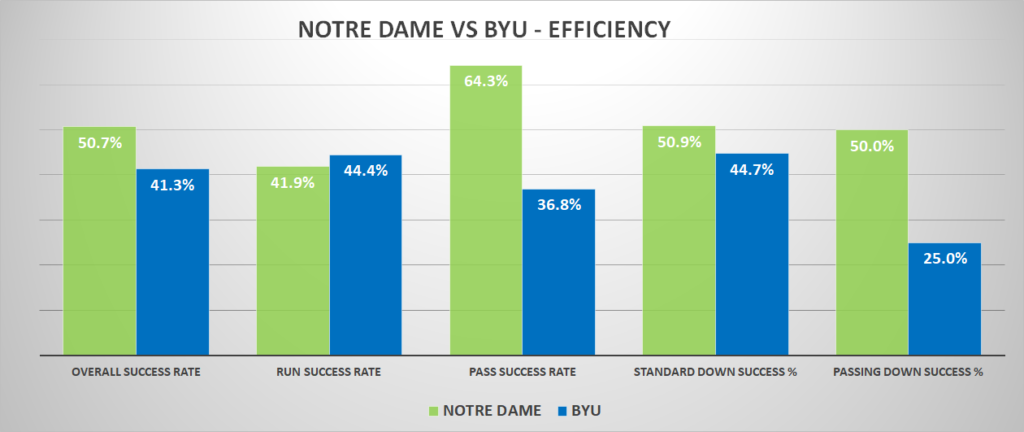
Notre Dame’s offensive turnaround has included massive improvement on the offensive line and the running game becoming a major weapon. But Drew Pyne quickly getting comfortable has been the most important aspect, and the climb in performance has been incredibly impressive. Against Cal? Good enough to secure the W. In Chapel Hill? Cool, but against that defense, does it translate?
Three games (and 10 quarters) in a row is a trend though, and this was an efficient performance that stacks up with the top performances of any ND QB over the past few years. Last year Jack Coan cracked 60% pass efficiency just twice (UVA, Georgia Tech) – Pyne arriving there in start #3 with over 9 yards per attempt is extremely impressive.
The offensive explosiveness has improved, but key to sustaining drives has been Pyne’s improvement on passing downs. The Irish again did a terrific job avoiding 3rd and forever, averaging just 4.88 yards to go on 3rd down. But in those situations – seven 3rd downs of 5+ – Pyne converted five of seven chances.
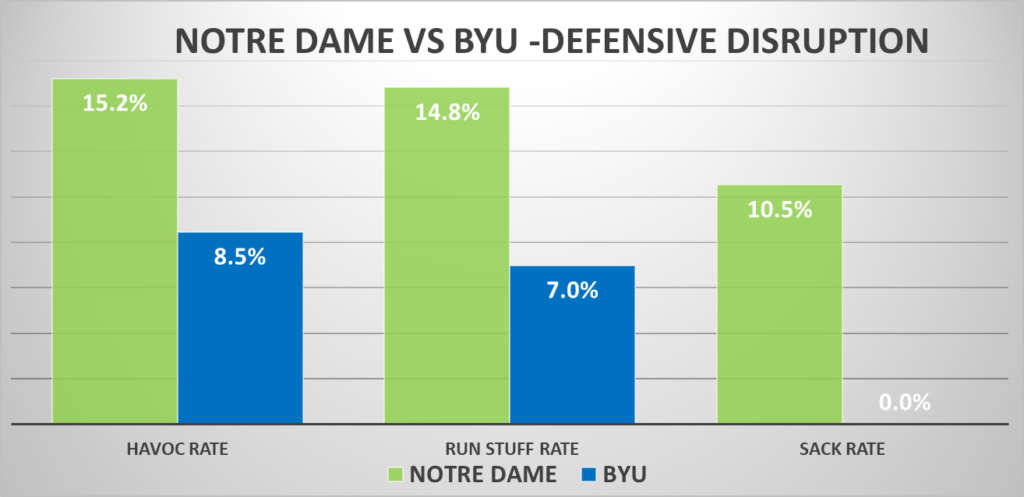
Another way to keep drives going? Don’t allow any negative plays. For the first time in 2022, Harry Hiestand’s group allowed zero sacks and just three run stuffs in 43 carries. BYU is a low havoc team, but this is a strength for the Irish to build on that will be key against the tougher defenses remaining on the schedule.
Can the defense put together a full game, or is this just who they are?
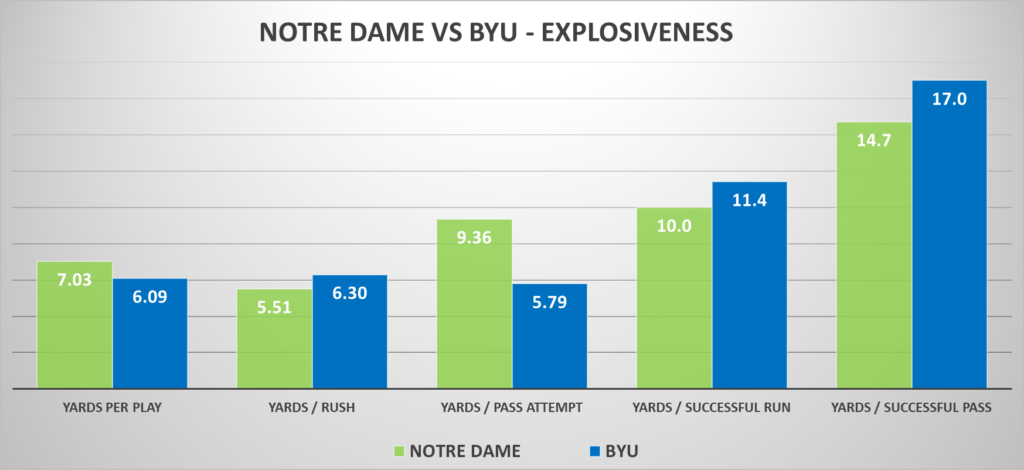
What do we make of the Notre Dame defense at this point? There are brilliant stretches punctuated by long touchdown runs and drives extended by mind-melting mistakes. UNC and BYU are both upper-tier offenses, and the Irish defense showed the ability to shut them both down for quarters at a time. Is there another level the defense can reach by simply eliminating these backbreaking plays and tightening things up? Or is this just the reality of a defense that has each unit performing pretty well but nothing quite up to the task of dominating.
Howard Cross’s absence shouldn’t be discounted, especially combined with Jacob Lacey’s departure from the program. It sounds like Cross will return for Stanford, but the defensive line feels a bit thinner already. The numbers against the run are a bit shocking, because Al Golden’s defenses have had terrific stretches shutting down opponent running backs. But those have usually come with some exceptions – mobile quarterbacks grabbing yards, or the long runs breaking up days where opponents are inefficient. Still, the defensive line stats from Football Outsiders – not good!
- Average Line Yards Allowed: 117th
- Opponent Opportunity Rate: 125th
- Power Success Rate Allowed: 23rd
- Stuff Rate: 62nd
The lack of disruption defending the run has been balanced out by the pass rush, where the Irish are 11th in sack rate including 8th on passing downs. But it profiles as a bend but don’t break defense that’s breaking too often, not creating turnover opportunities, and very streaky. The result is a defense ranked 18th in F+ and doing a solid job limiting opponent points and getting a large benefit from preseason projections and opponent adjustments. But there are some concerning underlying signals in the numbers and tendencies on tape.
Points left on the table kept the game competitive
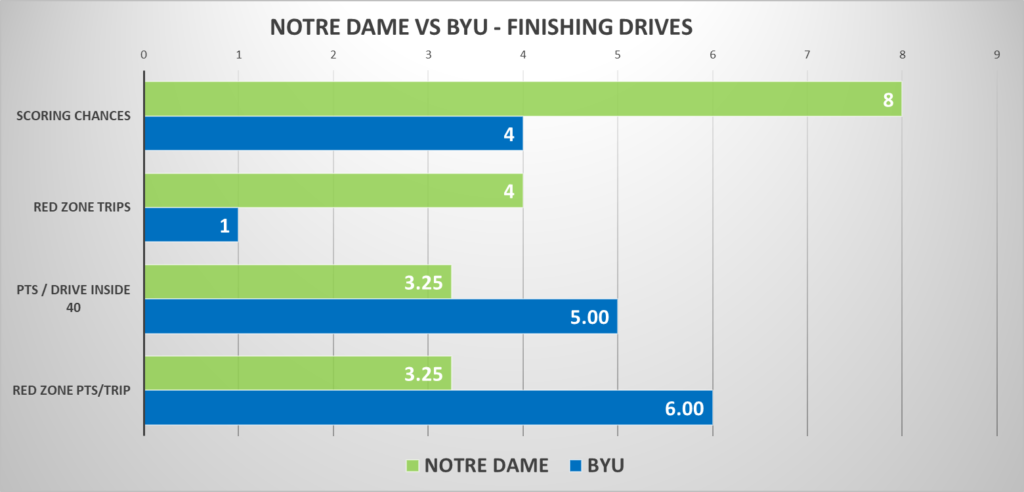
Pyne and the Notre Dame offense are on an incredible roll – excluding garbage time, if you combine UNC and BYU the Irish have created scoring chances on 17 of their last 20 possessions. Doubling up the Cougars in creating scoring chances should have helped lead to a blowout, but ND averaged only around three points per scoring chance. Four red zone visits ended in only 13 points, with the failed 4th down run by Estime and two trips settling for field goals. Pyne’s interception to a double-covered Mayer was another scoring opportunity resulting in no points.
The Irish are now 102nd in points per scoring opportunity (3.44) for the season. Red zone performance hasn’t weighed things down, as the Irish are T39th in red zone scoring rate (87.5%) and 40th in points per red zone trip (5.38). But the zone between the opponent 40 and 20 has been an issue, with turnovers and failed conversions causing Notre Dame to come up empty too often. One area of low-hanging fruit is power run success rate – converting 3rd and 4th down runs of two or less. Despite Audric Estime and the OL, ND is converting only 45.5% of these situations, 120th in FBS.
Right now the positives of the offense creating so many scoring chances outweighs the negatives of failing to convert them at a high rate, but at some point in the second half of the schedule these points will be the difference in a game.
On to Stanford
It’s like slipping into a cozy sweatshirt to return to the usual rhythm of these breakdowns from the past few years – looking at very positive numbers and identifying a few areas that will need to be cleaned up to continue winning somewhat comfortably and compete against the best teams on the schedule.
The Stanford game comes in an ideal place in the calendar. It offers the opportunity for Pyne, the rushing attack, and receivers to continue developing with massive advantages with the Irish OL vs Stanford DL. It’s a chance for the Notre Dame pass rush to flex and pile up numbers, but also the secondary to continue ironing things out against a solid receiver group and young guys like Benjamin Morrison and Jaden Mickey to continue to learn.
There’s also the juicy opportunity to perhaps begin digging David Shaw’s grave. At this point maybe it’s more fun for him to stick around, as it’s been very enjoyable since 2018 to watch him helplessly complain and be so clearly overmatched. But Notre Dame has been sniffing around a blowout the past two weeks, and this would be an ideal weekend to just put it all together and finish a game off cleanly. The next two weeks offer the chance for Notre Dame to dominate and put up the numbers needed to move up in the rankings, human and computer-based, that dig them out of the early 0-2 hole.

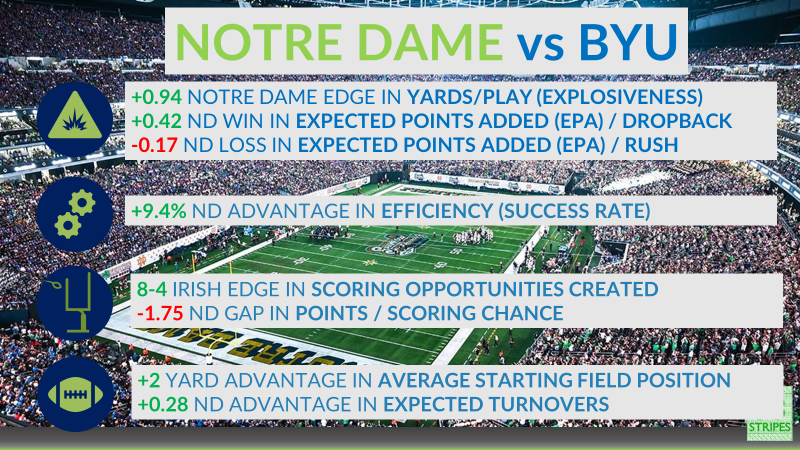
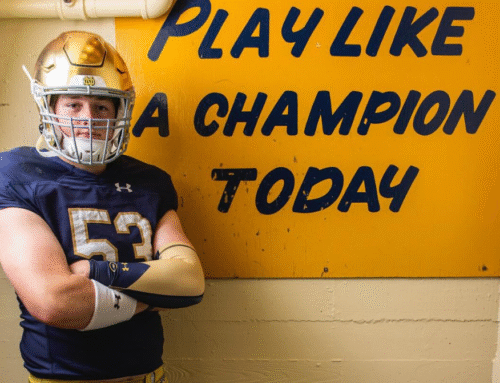

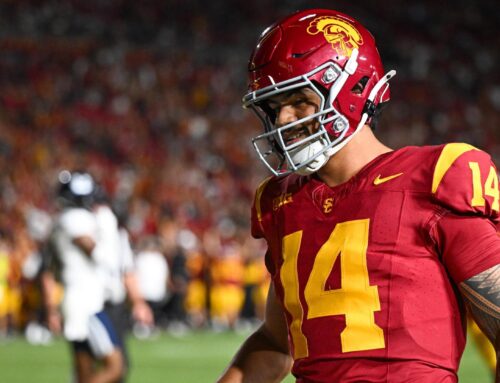
Another super look, Michael, merci! Concise, helpful, insightful. I love the way you phrased the key question re: our defensive lapses. Very head scratching. Didn’t we see some of this last year when MF was DC?
early last year definitely a trend of being very stingy but giving up explosives. Opponent success rates vs FSU, Toledo, Purdue, Wisco were all in the mid to low 30% range, but especially in the first two games we were giving up bombs / long runs despite that success. Then later it seemed like the big plays were more limited (UNC an exception here) but the trade-off was higher opponent efficiency.
This year it seems like something in the middle? It’s been inconsistent game to game, and by opponent success rate ND is top 20 in passing defense and bottom 20 in rushing defense. I think they can be very effective bend but dont break cleaning up some things in play-calling and counting on the front seven to win enough to force passing downs where they should be very good.
So… inconsistency pops out, continually. I wonder if his experience at Cincinnati relates. I dwell on this because he keeps talking about it — as do many coaches. It’s the successful ones that manage to have a more consistent approach, at least in my experience. But the price they seem to pay is unrelenting unhappiness. Which poses a question for me at least about Coach Freeman — is he too good a guy?
Never considered that, but it’s interesting. Golden has taken some share of the blame this year too and volunteered that his calls in key moments need to improve. I lean towards blaming player execution more than coaching (other than the obvious like the ill-timed safety blitzes), it seems like more often that is what mostly gets them burned on the explosive plays against when someone just loses to the other team and then it’s a big gain or TD against.
I wonder if NDs desire to rotate players so aggressively is also playing a part. If you play your experienced starters a ton, you’re likely to not have as many big blown assignments. But those guys are likely to wear down over a game and perhaps make fewer havoc plays.
On the flip side, if you’re rotating guys aggressively, you’re going to have fresh bodies late in games who can make big splash plays in big moments. But the rotations lead to lots of snaps for freshmen corners, LBs who don’t have a ton of experience, and D Linemen who aren’t as big and strong as your vets.
Without any stats to back this up, it felt like Clark Lea and DCs before him tended to go with a tight rotation, and play a safer bend but don’t break defense. Let the vets play smart and hope the other team beats itself. Since Freeman came on board, it feels like we are getting tons of guys snaps, hoping to have fresh bodies flying around making aggressive plays.
MikeyB, I think this is a very good point. In fact, the II guys have brought this up on their podcasts a couple of times, when we wound up having third string guys on the field at critical moments in the 4th quarter, on key plays in the long fourth quarter drives that have really been disappointing and costly.
Hook,, to your point, yes, player execution but my thought is that the driven, bitchy, virtually obsessed coaches (given if they have talent plus a basic respect for their players) tend to get better player execution — Leahy, Ara, Lou.
We’re never losing again, IMO.